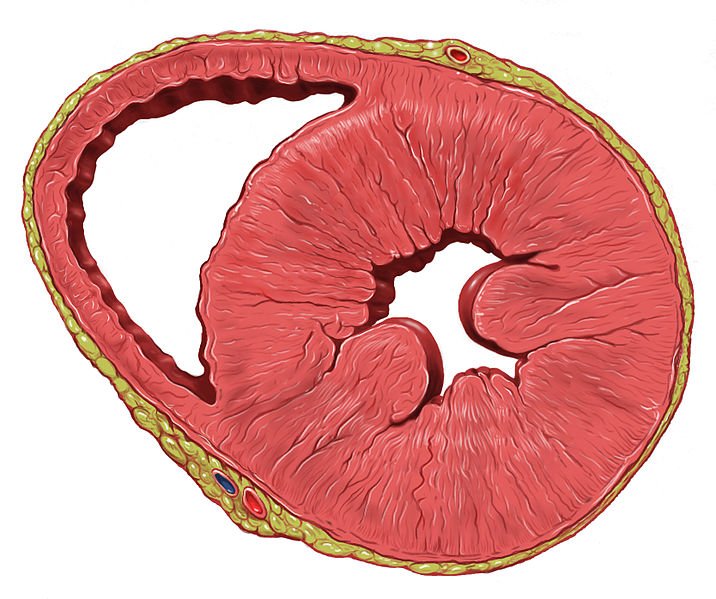Playlist
Show Playlist
Hide Playlist
Hypertrophy
-
Slides Cellular Pathology Adaptation to Injury.pdf
-
Download Lecture Overview
00:00 Let's talk about hypertrophy, kind of the flipside of the coin. 00:04 Hypertrophy is an increase in cell size. 00:07 So this gentleman shown here has exactly the same amount of skeletal muscle. 00:13 Cells as I do, and yet his arm looks a whole lot better than mine. 00:17 You can't see it through the jacket, but this is better. 00:20 He doesn't have any more muscles. 00:22 He just has bigger cells. 00:25 So, as a result of the increased size of cells, the organ apparently gets bigger too. 00:30 So it happens with not only just muscle but with other tissues. 00:35 We want to distinguish this process from hyperplasia. 00:38 Hyperplasia means more cells number not more cell size, but more cell number. 00:43 So we will come to hyperplasia next. 00:45 It's reversible. 00:47 So, Arnold Schwarzenegger used to look like that. 00:49 If you see Arnold Schwarzenegger now, his muscles are more like mine, and that's because he's not working out at quite the same rate. 00:57 He doesn't have the same hypertrophy. 00:59 So it's reversible, for example, in skeletal muscle. 01:01 It's also reversible in cardiac muscle. 01:04 So this is just an example of the top figure shows. 01:07 This is an animal preparation, but shows kind of a normal left ventricle that's the thicker pink and shows the right ventricle, which is the thinner pink. 01:14 And then the white areas in between are the chambers of the heart. 01:18 If you banned the aorta, if you put a little string around the aorta, you basically cause hypertension. 01:26 In this model, and as a result of that, the muscles cells get bigger, they have to pump against a higher pressure, and you get thickening of the ventricle. 01:35 If I subsequently release that little ligature, take the noose off the aorta. 01:40 Then that muscle will revert, so it's basically hypertrophy is a reversible process. 01:45 You build up extra protein and you could break it back down, using the things we talked about that cause atrophy. 01:53 Proteasome, autophagy. 01:57 And I've mentioned this previously and is just another good example of hypertrophy. 02:01 On the left hand side, you see a woman who is very clearly pregnant and the uterus has increased dramatically in volume and size over the course of the pregnancy. 02:14 There are not a whole lot more cells. 02:17 In fact, the vast majority of the size change in this uterus from pre-pregnant to end of pregnancy is in the size. 02:26 So there's massive hypertrophy. 02:27 And that's all well and good, because once the baby is delivered, those cells will revert back to their normal size and the uterus gets back down to its normal size. 02:37 All right, so we've had atrophy and hypertrophy. 02:39 Let's talk about hyperplasia.
About the Lecture
The lecture Hypertrophy by Richard Mitchell, MD, PhD is from the course Cellular Injury.
Included Quiz Questions
Which of the following describes hypertrophy?
- Increase in cell size
- Increase in cell number
- Irreversible type of adaptation
- Transformation of one differentiated cell type to another differentiated cell type
- Abnormal structure of cells or tissue
Customer reviews
5,0 of 5 stars
| 5 Stars |
|
1 |
| 4 Stars |
|
0 |
| 3 Stars |
|
0 |
| 2 Stars |
|
0 |
| 1 Star |
|
0 |
1 customer review without text
1 user review without text





